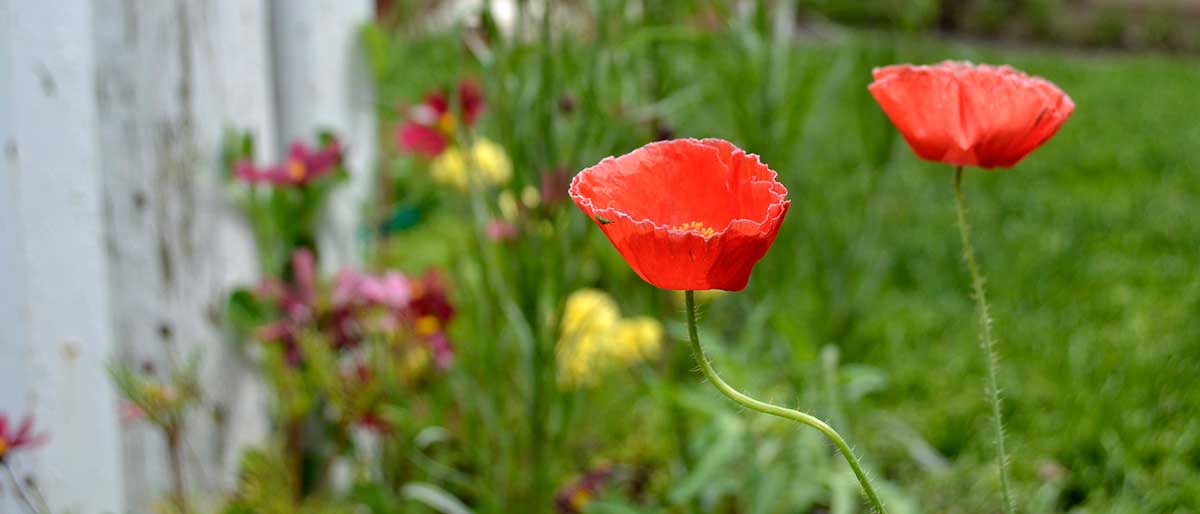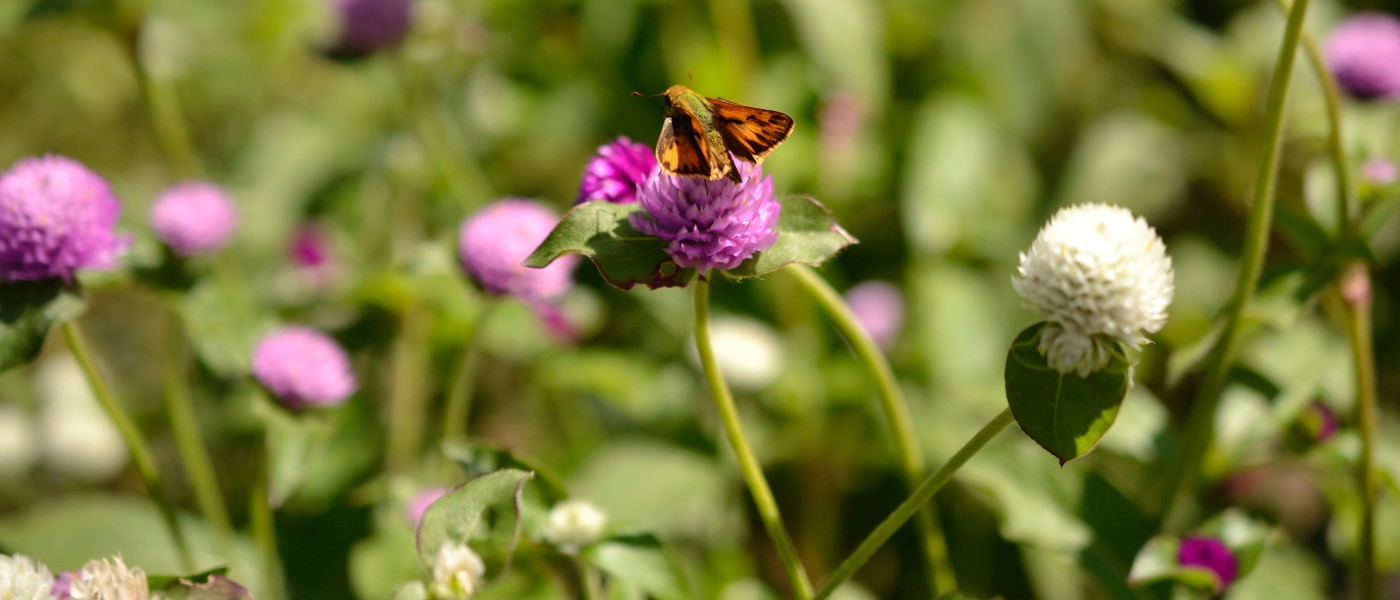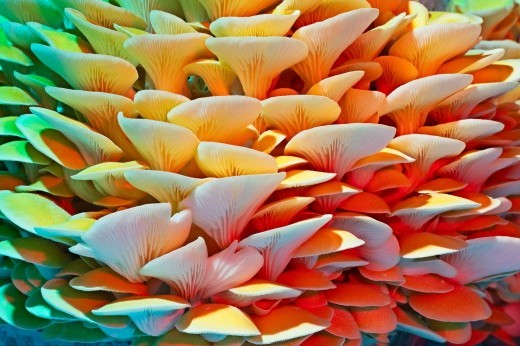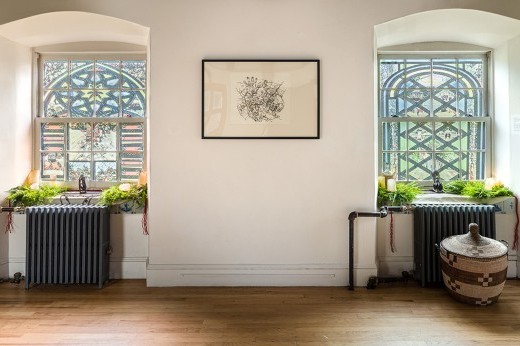Into the Garden is an ongoing series of interviews about plants, people, and everything in between.
Shalene Jha, an associate professor in the department of integrative biology at the University of Texas-Austin, has contributed to a growing body of research on the ecological benefits of urban green spaces. Cities, researchers have shown, can offer thriving, and increasingly vital, pockets of habitat.

Community gardens are a prime example. A recent study led by Jha, published in February in the journal Ecology Letters, examined 28 community gardens in California to better understand the relationship between urban food production and biodiversity.
“There tends to be this expectation that there is a biodiversity and food production tradeoff,” says Jha—in other words, that growing food comes with ecological drawbacks. But the study offered fresh evidence that food crops, ecological richness, and people can, in fact, happily commingle. Community gardens can even harbor surprising quantities of rare species, according to another 2021 study that Jha coauthored. That paper, led by Theresa W. Ong, found “overwhelming numbers” of rare plants, bees, and birds living in community gardens.
We spoke with Jha about urban habitats, “bee bread,” and gardening toward a better future.
When did you first become interested in the relationship between people and pollinators?
As an undergraduate, I started volunteering for our urban community garden at Rice University. At the same time, I was looking at species interactions as an undergraduate research assistant. And I was intrigued by the fact that so much of what we eat depends on these really important species interactions—pollination, effective pest control, plants interacting with water resources and microbes in the soil.
Biodiversity is incredibly important to study in its own right, but it’s also such an important part of our food system. I began my PhD looking at managing food systems for biodiversity on coffee farms in Mexico. You’d think that coffee farms are very different from urban gardens, but there are actually a lot of parallels. They can often be polyculture settings where people are growing lots of different things. There are a lot of different management practices, and a huge array of “ecosystem services,” which is what scientists call the ecological benefits that nature provides in those systems.
I realized that I'd really love to work in food systems that are closer to where much of the world's population lives. Almost 60 percent of the world’s population lives in cities, and an increasing portion of our food system is provided by urban agriculture. It seemed like a really important place to be looking at the same extremely valuable species interactions, like pollination and pest control.
My colleagues and I specialize in pollinators and how they interact with plants. In that group, we tend to be especially enchanted by bees, because they’re just such important global pollinators—they’re among the most effective pollinators for both native plants and cultivated crops.
What do you wish more people knew about bees?
The parental care that they provide is really fascinating. The vast majority of bees are actually solitary bees and nest underground. A single female bee will lay an egg on top of a pollen ball, and it’ll develop into a larvae, and then the larvae will grow and consume this pollen ball.
The ball is made up of regurgitated nectar and pollen from plants that the bee has foraged on. Just like a ball of dough, the pollen ball basically ferments and becomes more nutritious. It’s actually called bee bread in the bee biology world, and it’s essential for larval growth and development.
A number of studies are showing that for the majority of bee species, just like humans, diversity in their diet is really important for their offspring. So you’ve got to have other food sources for the bees, because if you only have one crop, their larvae are very limited and probably not going to survive. If you have those other plant species there, the offspring are going to be healthier, and the bees will stick around longer.
Can you walk me through your most recent study about biodiversity in community gardens? What did you find?
Most agro-ecological studies, up until the last 10 years or so, have been very focused on rural agricultural systems. In these more rural systems, there tends to be this expectation that there is a biodiversity and food production tradeoff—basically, that you need a monoculture with low biodiversity to get an optimum yield. There’s a question about whether that’s even true in rural areas, but we wanted to see if this relationship was true in urban gardens.
We looked at 25 gardens across the San Jose and Santa Cruz area in California over five years, studying 22 different ecosystem services and 18 ecosystem service-providing organisms. We measured things like water, soil carbon, temperature, climate buffering, food production, and pollinator and pest-controlling species richness and abundance. We also surveyed how people felt in the garden—their sense of well-being, security, and connectedness. And we measured the amount of food that was produced in these gardens.
We compared them and asked ourselves, which are the gardens that produce the most food, support the most pollinators, support the most pest-controlling organisms, and support these various aspects of soil quality and human well-being and social relations? And what we find is just a bunch of synergies. For example, a lot of the features that promote a sense of well-being are also really good for pollinators and pest-controlling agents. Promoting biodiversity isn’t at odds with producing food.
We’re seeing these positive interactions between crops, and between cultivated plants and noncultivated plants—where, for example, the native plants are attracting more pollinators or supporting more pest-controlling insects, which then provide the reproductive services that the crops need. This expectation that there’s some inherent tradeoff comes from a model of agriculture that is very distinct from urban gardens and isn’t necessarily representative of other farming practices.
You’ve spent time in lots of different community gardens. Have you noticed any interesting trends?
One thing we’re seeing is that often, diversity in the gardeners is captured in the diversity in the plants. When you have gardeners from many different countries and different backgrounds, they tend to cultivate crops from all over the world, using a variety of practices.
We’re also seeing a resurgence in understanding the benefits of noncultivated plants—again, plants that attract pollinators, and that support birds, that provide pest control, for example. There’s just a growing recognition that those are important, too.
I’m curious to know how you think about this in the context of the biodiversity crisis, and all these other interrelated crises we’re facing. Should community gardens and other urban green spaces be considered part of the solution?
I absolutely think so, for a couple of reasons. We’ve now been able to show that community gardens support not just weedy species, but actually a lot of rare species. And that they’re producing food in a way that is not at odds with biodiversity. So food is coming into your home without sacrificing habitat, and they are also places where people are feeling more connected with each other, feeling more connected with nature. And I think that kind of ecological kinship—just experiencing that relationship is the first step to wanting to protect it.
The reality is that more and more people are moving to urban areas. These are the places where people are going to be experiencing nature. We also know that there are major food distribution challenges in urban areas, and so having a local food source, and food sovereignty in your community, is also this important need that these gardens help address.
Most of the gardens that we've been studying are largely sustenance gardens; people are taking home fresh produce that they would not otherwise be getting. We’re finishing a paper that found that they’re producing upward of $27 a week in produce per gardener.
What are some questions that you still have? Is there anything you’re curious about?
One of the things we're looking at now is the actual interactions between organisms. And there’s a lot of neat opportunities there to understand, beyond just which species are present—are there ways we can manage gardens so that they’re interacting more, and providing more pest control, or providing more pollination services? Is there a management approach that allows pollinators to visit the garden in a way that’s more effective?
We’re also really interested in how gardeners perceive those organisms, and what they view as their ecological roles. We're working with the gardeners to codesign surveys, so scientists can learn from the local knowledge that’s already in the community.
Are you a gardener yourself?
I am, yes! I wouldn’t say I’m the most productive gardener. I have three veggie beds and a lot of native pollinator plants. I have an eight-year-old and a six-year-old, and they are a big reason why I garden. I want them to have a connection to nature and to our food system, and to know how much love and care and effort it takes to produce food, and how much we should respect the people who produce food.
Studying these urban garden systems, we’ve been really blown away by how the benefits of these gardens go far beyond just the food—including this incredible sense of well-being that the gardeners feel, which extends outside the garden boundaries to their homes, to the way they feel about each other and their broader community. These gardens are part of the social fabric, while serving as really important biodiversity refuges in otherwise quickly urbanizing areas.




